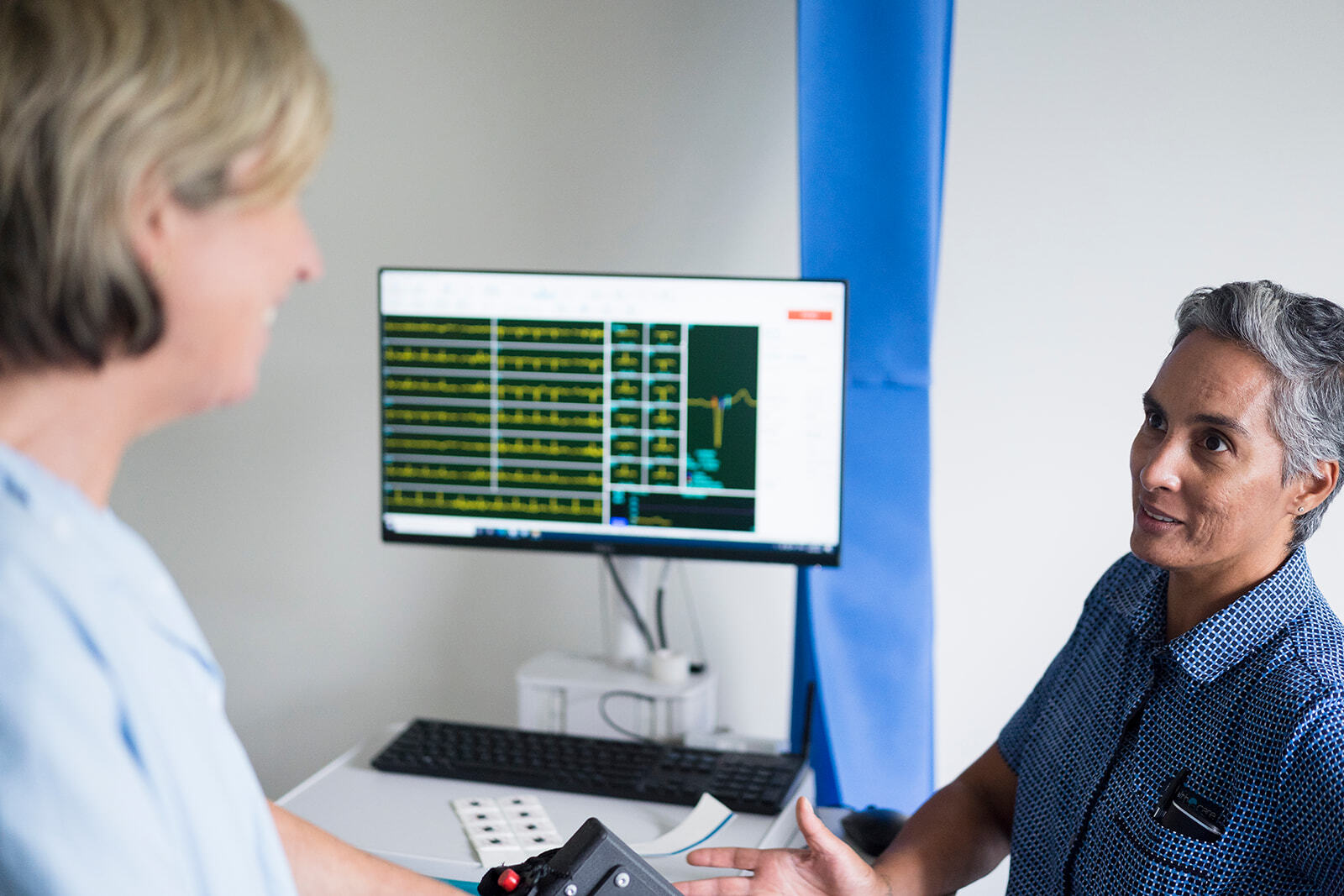Healthe Heart Patient Information
Healthe Heart was a finalist in the 2021 Australian Private Hospital's Association (APHA) Awards for Excellence in the Innovation category.

Phone: 02 4918 0150
Healthe Heart is a bulk-billing rapid access cardiac testing service. Healthe Heart offers a range of services including:
- Transthoracic Echo - An echo is a non-invasive test that uses sound waves to evaluate your heart's chambers and valves, and how well it pumps. The echo sound waves create a real time image on the monitor as an ultrasound probe is passed across the skin over your heart.
- Stress Test - This is also called a treadmill or exercise ECG. This test is done to monitor the heart while you walk on a treadmill or pedal a stationary bike. Your doctor also monitors your breathing and blood pressure. A stress test may be used to detect coronary artery disease, or to determine safe levels of exercise after a heart attack or heart surgery. This test can also be done using special medicines that stress the heart in a similar manner as exercise does. Sometimes a stress test will collect ECG information along with heart ultrasound pictures. This is called an exercise or stress echocardiogram. It is more sensitive and specific than ECG stress testing alone.
- Holter Monitor - For this test, you wear a small, portable, battery-powered ECG machine. Small patches (wired electrodes) are attached to the skin over your heart. The monitor records heartbeats over a period of 24 to 48 hours during normal activities. At the end of the time period, you will return the monitor to the doctor's office so it can be read and evaluated. Some Holter monitors can be worn for up to 2 weeks.
- Event Monitor - For this test, patients wear a small, portable, battery-powered machine used to record ECG over several weeks. Each time you have symptoms, you press a button on the recorder to record the ECG sample. As soon as possible, you will transmit this sample to the doctor's office for evaluation. Other types of event recorders don't use wires. Instead small cards with electrodes on them are placed on the skin over the heart.
We also offer:
- Atrial Fibrillation Clinic
- Heart Failure Clinic
Patients require a GP referral to the service where cardiac testing will be bulk billed. Once our team received your referral you will receive consultation/testing within one week (prioritised by urgency) with referrers receiving report within 48 hours of testing.
Healthe Heart Locations
Lingard Private Hospital - Main hospital building, Level 1, 23 Merewether Street, Merewether
Maitland Private Hospital - Medical Centre 2, Suite 14B, Level 2, 173 Chisholm Road, East Maitland NSW 2323
Charlestown Specialist Centre - Level 1, 43 Dickinson Street, Charlestown NSW 2290
Where to park?
We have a multi-level car park on Lingard Street beneath the Lingard Day Centre. Parking is charged at $2 per hour to a maximum of $10 per day. Free street parking is also available.
Limited free parking is available at Maitland Private Hospital. Most of the parking is paid parking so please read the signage carefully to avoid any parking tickets.
Charlestown Specialist Centre has free parking available onsite, and street parking also available.
When to arrive?
Patients should aim to arrive ten minutes early for their appointment. Please ensure adequate time is given for parking and walking to the unit.
Who will be doing my cardiac testing?
Your cardiac testing will be completed by one of our staff either a sonographer or our cardiac nurse practitioner depending on your test. The test results will be reviewed by one of our Healthe Heart Cardiologists who will make a diagnosis and recommendation which will be sent to your GP.
Along with the health professionals outlined above, you will also come across some of our administration personnel. Please feel free to ask any questions you may have to our team members and we will do what we can to assist you.
When will I get my results?
Your results will be sent directly to your GP within three days of your cardiac testing. You should confirm that your GP has received your results before you book an appointment to discuss them.
What do I wear for my appointment?
Patients are encouraged to wear comfortable clothing and footwear. Patients undergoing stress testing will be required to walk on a treadmill or pedal a stationary bike – so please ensure your clothing and footwear are appropriate for such activities.
How long will my appointment go for?
Please allow an hour for your testing.
What else can I expect?
Some tests require patients to remove clothing. If this is the case you will be given a sheet or gown to place over you. If you have concerns about the gender of your sonographer, please let us know so that we can accommodate your needs. Patients can bring along one support person or carer.
Thank you for choosing Healthe Heart for your cardiac testing.
